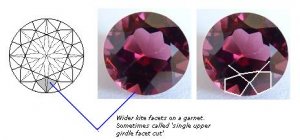elmo
Brilliant_Rock
- Joined
- Jun 18, 2003
- Messages
- 1,160
When a stone''s pavilion is tweaked say to reduce a window and the length/width dimensions are reduced a bit as a result, is it fairly normal practice to leave the crown as-is? I was looking at something yesterday that had been touched up like this...the kite facets were clipped off at the girdle by maybe 10-20% i.e. didn''t come to a point as I expect they did originally. I guess under ideal conditions I would have thought that if someone went to the trouble to recut the bottom, the top would have been touched up as well, given enough additional weight to play with. Not sure what is typical though.





300x240.png)